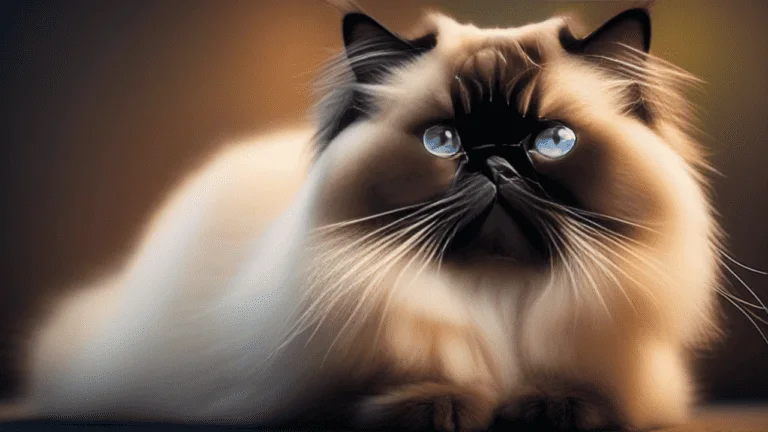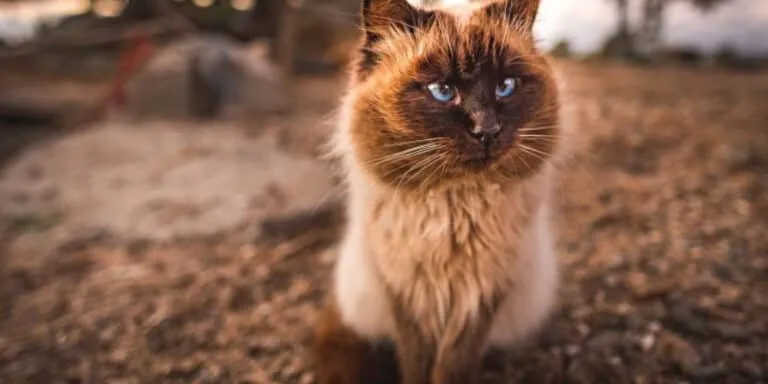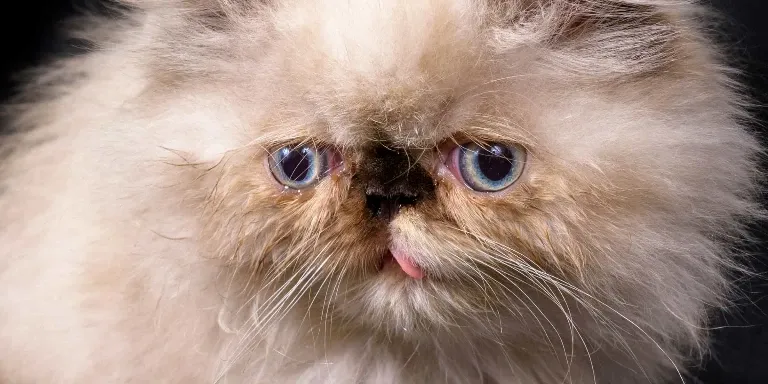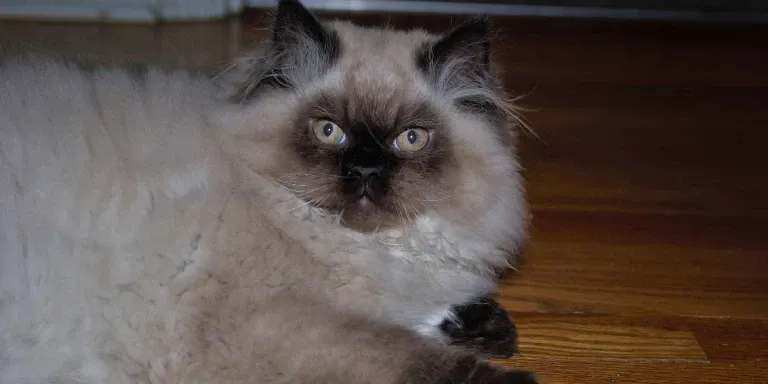The Best Fluffy Pancakes recipe you will fall in love with. Full of tips and tricks to help you make the best pancakes.
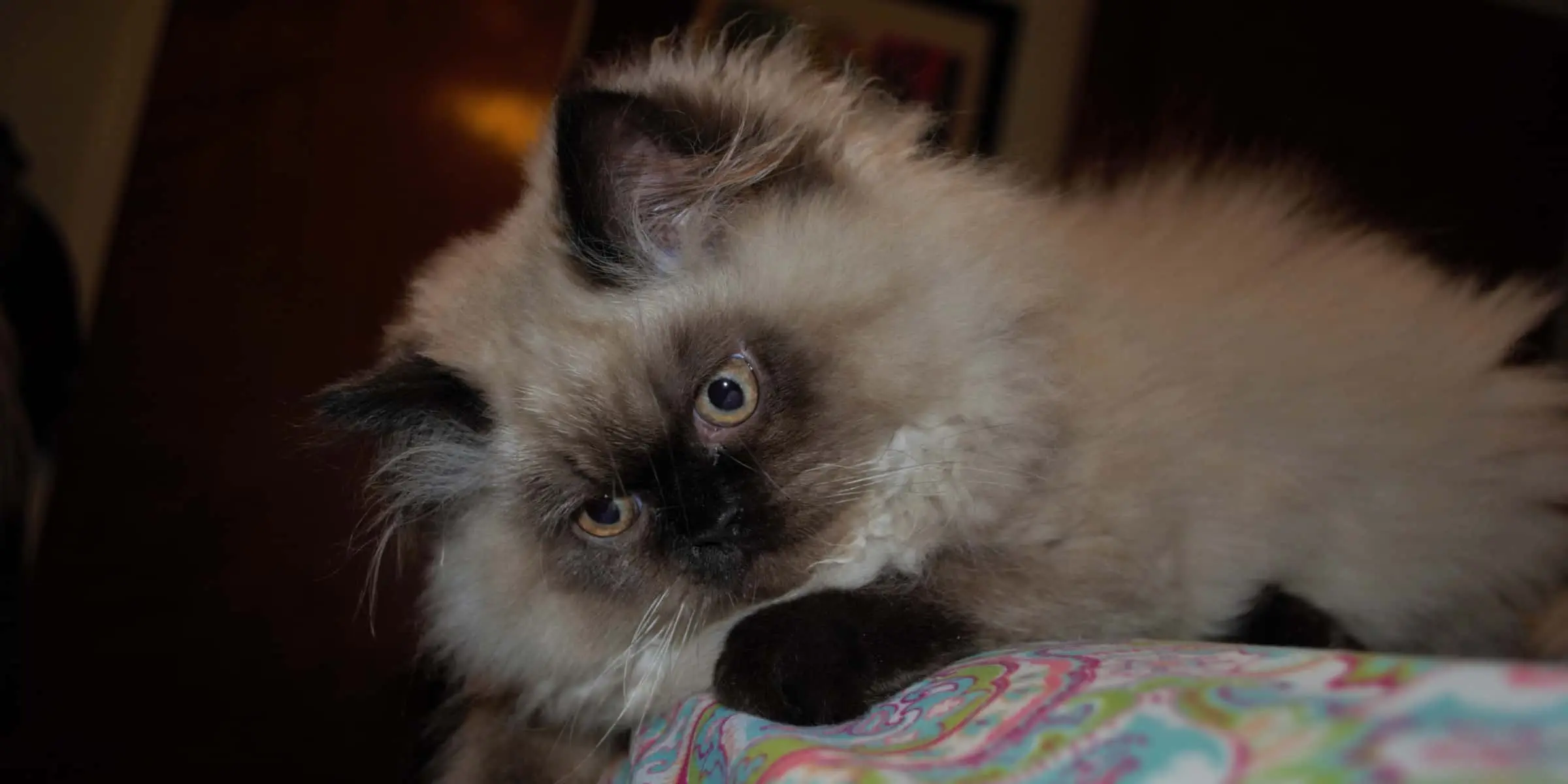
Do you dream of owning a Himalayan cat, but worry about the amount of shedding they might produce? Shedding is a natural and inevitable process for cats, and it varies greatly among different breeds. If you’re wondering if Himalayan cats shed a lot, you’ve come to the right place.
Himalayan cats do shed a moderate amount, but it can be managed with regular brushing and grooming. Their long, thick fur requires regular maintenance to prevent matting and tangling.
In this article, we’ll explore everything you need to know about shedding in Himalayan cats. We’ll explain why cats shed, how shedding works in this particular breed, and what you can do to manage it. We’ll also address common misconceptions about shedding and provide tips for keeping your Himalayan cat healthy and comfortable.
So, let’s dive in and discover whether a Himalayan cat is the right pet for you.
Understanding Shedding in Cats
If you’re a cat lover, you know that shedding can be a real pain. However, shedding is a natural process that helps cats get rid of old or damaged hair and make way for new ones. Understanding why cats shed is crucial to keeping your Himalayan cat’s coat healthy and shiny.
There are two types of cat hair: guard hairs and undercoat. Guard hairs are the long, stiff hairs that protect a cat’s body from the environment, while undercoat is the soft, fluffy hair that provides insulation. Cats shed their undercoat twice a year, and this is known as shedding season.
During this time, you may notice an increase in shedding, and your Himalayan cat may develop mats or tangles in their fur. Regular grooming can help prevent these issues and keep your cat’s coat healthy and shiny.
Himalayan Cats and Shedding
If you’re considering getting a Himalayan cat, it’s important to understand their shedding habits. These cats are known for their long, luxurious coats, which require regular grooming to keep them looking their best.
While they don’t shed as much as some other breeds, they still do shed, and the frequency and amount can vary depending on a range of factors. Understanding these factors can help you manage your cat’s shedding and keep your home clean and tidy.
Characteristics of their Long Coat
You’ll love the luxurious look of your Himalayan cat’s long coat, but be prepared for regular grooming sessions to keep it from shedding all over your home. Here are three characteristics of their long coat that make it a bit more challenging to maintain:
- The Himalayan’s coat is thick and lustrous, with a silky texture that is prone to tangling and matting if not brushed regularly. This means you’ll need to invest in a good quality brush to keep their coat looking its best.
- Himalayan cats require regular grooming sessions to prevent shedding and maintain their long coat. This means you’ll need to set aside time each week to brush your cat, trim their nails, and check their ears for any signs of infection.
- While Himalayan cats shed less than some other breeds, they still require regular grooming to prevent shedding. This means you’ll need to brush your cat’s coat frequently to remove any loose fur and prevent it from ending up all over your home.
With proper long coat maintenance, you can keep your Himalayan cat looking and feeling their best, while also keeping your home free from excessive shedding.
Frequency and Amount of Shedding
Fur from your fluffy feline friend may fall frequently, so be prepared for some sweeping and dusting.
Himalayan cats do shed, but the amount and frequency depends on various factors such as age, diet, season, and grooming techniques.
While you can’t prevent shedding completely, regular grooming can significantly reduce the amount of hair that accumulates in your home.
Brushing your cat’s long coat daily with a stainless steel comb or a slicker brush can help remove loose hair and prevent matting.
Bathing your cat every few weeks can also help remove loose hair and keep their coat healthy and shiny.
Additionally, providing your cat with a balanced diet rich in omega-3 fatty acids can improve their coat quality and reduce shedding.
So, with proper grooming and care, you can minimize shedding and enjoy cuddling with your fluffy Himalayan cat without worrying about excessive hair around your home.
Factors that Affect Shedding in Himalayan Cats
Regular grooming and a balanced diet are key factors in controlling the shedding of your fluffy Himalayan cat. Factors affecting grooming frequency include the length and thickness of your cat’s coat, as well as their activity level and overall health.
If your cat has a longer coat, they may require more frequent grooming to prevent mats and tangles, which can trap loose fur and contribute to shedding. Additionally, if your cat is more active or spends time outdoors, they may pick up more dirt and debris in their coat, which can also lead to shedding.
To help maintain your Himalayan cat’s coat and control shedding, there are several coat maintenance tips you can follow. First, make sure to brush your cat regularly, using a comb or brush specifically designed for long-haired cats. This will help remove loose fur and prevent mats and tangles from forming.
Additionally, consider supplementing your cat’s diet with omega-3 fatty acids, which can help improve the health of their skin and coat. Finally, make sure your cat stays hydrated and gets enough exercise, as both can contribute to a healthy coat and reduced shedding.
By following these tips and paying attention to your cat’s individual needs, you can help keep your Himalayan cat looking and feeling their best.
Managing Shedding in Himalayan Cats
When taking care of a Himalayan cat, it’s important to be prepared for their shedding and have a plan in place to manage it.
Shedding prevention starts with proper grooming. Brush your cat regularly to remove loose fur and prevent mats from forming. Use a comb or a slicker brush to remove loose fur from their undercoat. A bath every few months can also help reduce shedding, but be sure to use a cat-specific shampoo that won’t irritate their skin.
Another way to manage shedding is to keep your cat’s environment clean. Vacuum and dust regularly to remove any loose fur that may have accumulated on furniture and floors. Invest in a good air purifier to help capture any airborne fur and dander.
You can also provide your cat with a designated scratching post to encourage them to scratch and shed on a specific area, rather than all over your furniture.
With these tips in mind, you can manage shedding in your Himalayan cat and keep your home fur-free.
Tools and Techniques for Grooming Himalayan Cats
Keeping your Himalayan cat looking and feeling great is easy with the right grooming tools and techniques. Himalayan cats require regular grooming to keep their long, luxurious coats in top condition. Here are some tools and techniques that are recommended to help you keep your Himalayan cat looking its best:
- Brush: A slicker brush is recommended for daily grooming to remove loose fur and prevent matting. You can also use a metal comb to remove tangles.
- Bathing: Himalayan cats do not need frequent baths, but they can benefit from a bath every few months. Use a mild cat shampoo and rinse thoroughly.
- Nail trimming: Trim your cat’s nails every 2-3 weeks to prevent them from getting too long and causing discomfort.
- Eye and ear cleaning: Clean your cat’s eyes and ears regularly with a damp cloth or cotton ball. Be sure to use separate cloths for each eye to prevent the spread of infection.
To keep your Himalayan cat looking its best, it is recommended to groom them at least once a week, but daily grooming is even better. This will help prevent matting and keep their fur shiny and healthy. Use the recommended tools and techniques to make grooming a pleasant experience for both you and your cat.
Some recommended products for grooming your Himalayan cat include: a slicker brush, metal comb, cat shampoo, nail clippers, and cotton balls. With the right tools and techniques, you can keep your Himalayan cat looking and feeling great.
Health and Medical Issues Related to Shedding
Oh boy, here we go again with the never-ending battle against furballs that seem to have a life of their own, thanks to the health and medical issues related to shedding in our feline friends. Himalayan cats are no exception, and their long, thick coats require special attention to prevent matting and skin conditions.
Preventing matting is crucial to a Himalayan cat’s health, as mats can pull on their skin, causing discomfort and irritation. Regular grooming, including brushing and combing, can help prevent mats from forming. Additionally, shaving or trimming the fur around the anus can prevent fecal matter from matting and causing skin irritation.
Some Himalayan cats may also benefit from a lion cut, where the fur is shaved short all over the body except for the head, legs, and tail. This not only prevents matting but also reduces shedding. It’s important to note that mats should never be cut out with scissors, as this can cause injury to the cat’s skin. If a mat is too severe to brush out, it’s best to seek the help of a professional groomer or veterinarian.
In addition to matting, Himalayan cats may also be prone to skin conditions related to shedding. Excessive shedding can lead to hairballs, which can cause blockages in the digestive system. This can be prevented by regularly grooming your cat and feeding them a diet high in fiber.
Some Himalayan cats may also develop skin allergies or infections due to their thick coat. Regular grooming can help prevent these issues, but if you notice any signs of skin irritation or infection, such as redness, itching, or discharge, it’s important to seek veterinary care.
With proper care and attention, you can help your Himalayan cat stay healthy and happy despite their shedding tendencies.
Common Misconceptions About Shedding in Himalayan Cats
Now that you understand the health and medical issues related to shedding in Himalayan cats, let’s tackle common misconceptions about shedding. Many people assume that Himalayan cats shed a lot because they have long fur. However, this is not entirely true.
Firstly, Himalayan cats have a dense undercoat that keeps them warm in colder seasons. This undercoat sheds twice a year during the shedding season, which typically occurs in the spring and fall. During this time, you may notice an increase in shedding, but it is not excessive.
Secondly, the grooming frequency of Himalayan cats plays a significant role in managing shedding. Regular grooming can help remove loose fur and prevent matting, which can lead to excessive shedding.
Overall, understanding the shedding season and proper grooming techniques can help you manage shedding in Himalayan cats effectively.
- Grooming frequency is crucial in managing shedding in Himalayan cats.
- Shedding season occurs twice a year in spring and fall.
- Proper grooming techniques can prevent matting and excessive shedding.
Other Considerations When Getting a Himalayan Cat
When considering getting a Himalayan cat, there are a few other key points to keep in mind beyond shedding. Firstly, it’s important to factor in the time and commitment required for grooming a Himalayan cat, as their long, luxurious fur requires daily brushing and regular bathing.
Additionally, if you or anyone in your household has allergies or sensitivities, it’s important to be aware that Himalayan cats do produce dander which can be an irritant. Lastly, if you already have other pets, it’s important to consider how a Himalayan cat will fit in with your current furry family members.
Time and Commitment for Grooming
You need to be prepared for the time and commitment required for grooming a Himalayan cat, as they have a long, thick coat that requires daily brushing and occasional bathing to prevent matting and shedding. Here are some tips to help you manage the grooming needs of your Himalayan cat:
- Use a metal comb and slicker brush to remove tangles and dead hair from their coat.
- Trim their nails regularly to prevent them from getting caught in their fur and causing discomfort.
Take your cat to a professional groomer every few months for a thorough grooming session, which can include a bath, haircut, and nail trim. This can help prevent matting and shedding, as well as keep your cat’s coat healthy and shiny.
With proper grooming, you can help keep your Himalayan cat looking and feeling their best. However, it’s important to remember that grooming is a significant time commitment, and may not be suitable for everyone’s lifestyle. If you’re considering getting a Himalayan cat, be sure to take their grooming needs into account before making your decision.
Allergies and Sensitivities
If you’re someone who loves cats but suffers from allergies, you’ll be happy to know that Himalayan cats may be a good option for you. These cats produce less of the allergen protein Fel d 1 compared to other cat breeds. However, it’s important to note that no cat breed is completely hypoallergenic, so allergy management is still necessary if you decide to adopt a Himalayan cat.
To manage allergies, it’s important to keep your home clean and free of cat hair and dander. Regular vacuuming, dusting, and cleaning can help reduce the allergens in your home. It’s also a good idea to have a designated area for your cat, such as a specific room or a cat tree, to minimize the spread of allergens.
Additionally, brushing your Himalayan cat regularly can help reduce shedding and dander, which can also help manage allergies. By taking these steps, you can enjoy the company of a Himalayan cat without sacrificing your health.
Compatibility with Other Pets
Despite their reputation for being aloof, Himalayan cats can actually be quite friendly towards other pets in the household. If you’re considering bringing a Himalayan cat into a home with dogs, there are some things to keep in mind to ensure a smooth introduction:
- Slowly introduce the pets to each other. Start by keeping them in separate rooms for a few days, allowing them to get used to each other’s scent.
- Supervise their interactions closely at first. Be prepared to separate them if any aggressive behavior occurs.
- Give each pet their own space for eating, sleeping, and using the litter box. This will help prevent any territorial issues.
- Provide plenty of toys and distractions for both pets to help ease any tension and promote positive interactions.
With patience and careful management, Himalayan cats can coexist peacefully with dogs and other pets in the household. As with any introduction of new pets, the key is to take it slow and be attentive to their behavior towards each other.
If Himalayan Cats Don’t Like to be Held, Do They Shed Less?
If Himalayan cats and holding don’t go hand in hand, you might wonder if they shed less. While their reluctance to be held doesn’t directly impact shedding, Himalayan cats do have long fur that requires regular grooming to prevent matting and excessive shedding. Proper care and grooming routines can help minimize shedding in these beautiful feline companions.
Conclusion
So, there you have it – Himalayan cats do shed, but not excessively so. With their beautiful long coats, it’s important to take steps to manage shedding through regular grooming and using the right tools. And remember, shedding can also be a sign of health issues, so it’s always important to keep an eye on your cat’s shedding patterns and consult with a veterinarian if you have any concerns.
One interesting statistic to note is that Himalayan cats are actually a relatively low-shedding breed compared to others. In fact, they are often recommended for people with allergies because they produce less dander than other cats. However, it’s important to remember that every cat is different, and some Himalayans may shed more than others depending on their individual genetics and health.

